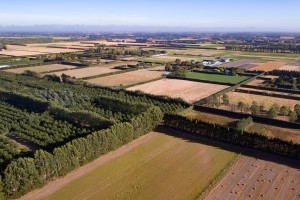Building whakawhanaungatanga in Waikato and the Bay of Plenty
In September 2019 a 6-year collaborative research programme, Biodiversity and Ecosystem Services for Resource Management (BEST), led by Manaaki Whenua, came to an end. The programme set out to avoid further degradation of New Zealand’s ecosystem services by helping land managers make better-informed natural resource management decisions.
As part of the BEST programme, we undertook two flagship initiatives that used participatory community processes and the concept of ecosystem services to underpin decisions at a catchment/ local level. The first, in the Rangitāiki catchment in the Bay of Plenty, looked at the potential impact of land-use intensification on the catchment. The second, in the Mangapiko catchment in the Waikato, used the same conceptual framing to develop an ecological restoration plan for the catchment that considered the various uses, needs, and aspirations of the whole community.
Researchers worked with tangata whenua to hear about their whakapapa, history, and relationship with their catchment, along with aspirations for their awa, repo, and whenua. Iwi involvement in the processes and their knowledge were invaluable to the researchers, but also to the community participants during discussions on the impacts of land-use intensification in the Rangitāiki catchment and the restoration options for the Mangapiko catchment.
The discussions with tangata whenua were crucial for building whakawhanaungatanga (relationships), exploring issues, and discussing scenarios for alternative land uses or for options to restore the landscape.
Tangata whenua brought a unique perspective on rongoā (medicines), healing springs/waters, and mahinga kai (food gathering) that others did not have, and their oral history about the catchment gave a greater depth of understanding of and appreciation for the surrounding landscape and the interconnections between the land, water, and people of the catchment.
In the Mangapiko catchment, as iwi, hapū and most importantly kaitiaki of their place, they were able to articulate what had changed for them and help identify how restoration efforts could be used to enhance the spiritual and physical health of the catchment.
Within the catchment, restoration efforts led by local farmers and the Waikato Regional Council have started that rehabilitation journey. Alternative methods have been tested for willow removal and native planting developed to meet community needs. Wetlands have been protected and reconnected to native remnants, and sediment traps are being used to reduce sediment loss into the stream – all underpinned by the participatory, collaborative strengths of the BEST programme.
Key contact

